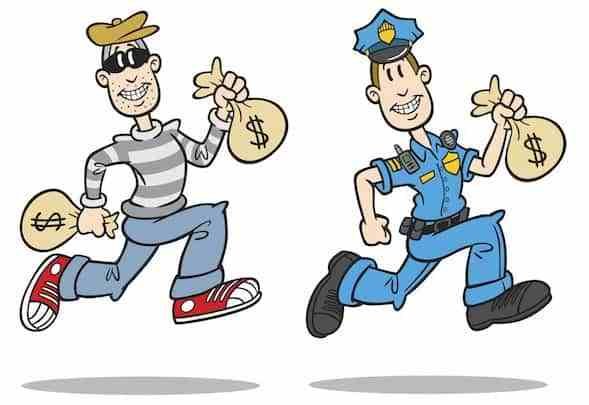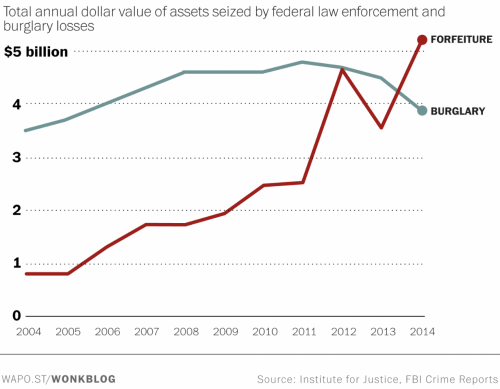
Civil forfeiture was authorized in 1988 and represents one of the most blatant assaults on private property rights today. Under civil forfeiture, police can seize your home, car, cash or other property without charging you with a crime. All the police need is the mere suspicion that your property may have some connection to criminal activity. You can forget about being innocent until proven guilty because, with civil forfeiture, your property is guilty until you prove it innocent.
Between 1989 and 2010, an estimated $12.6 billion was seized in asset forfeiture cases. In 2014 alone, the feds raked in over $5 billion in assets and, for the first time ever, stole more property than criminals.

Where does the money go? Law enforcement agencies are allowed to keep up to 80 percent of the profits from assets they seize. According to a report by Forbes, “This money may be used for better equipment, nicer offices, newer vehicles, trips to law enforcement conventions and, in states like Texas, even police salaries.”
As stated by the government,
“Many criminals are motivated by greed and the acquisition of material goods, therefore, the ability of the government to forfeit property connected with criminal activity can be an effective law enforcement tool by reducing the incentive for illegal conduct.”
The sentence should read:
“Many cops and government officials are motivated by greed and the acquisition of material goods, therefore, the ability of the government to steal property connected with criminal activity can be an effective law enforcement tool to dramatically increase their own salaries.”
I discuss how police rob billions each year in this short clip taken from the recent Vice Media episode titled, “How Police Departments Use Civil Forfeiture to Collect Billions.” All credit for this clip goes to my good friend, Vice Director/Producer James Burns.
